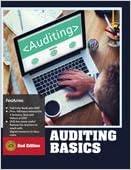Multiple Answer: Using the dancing cat example from lecture, which of the following are appropriate conclusions if we just conduct the overall analysis without looking at the residuals? There may be multiple correct answers. Partial credit will be given for correct answers, negative credit for incorrect answers. No score below zero. When food is used as reward a different number of cats as expected danced and did not dance. When food is used as reward as many cats as expected danced and did not dance. When affection is used as reward the number of cats that danced and did not dance was different than expected. When affection is used as reward as many cats as expected danced and did not dance, Dancing behavior is not dependent upon training in cats. Dancing behavior is dependent upon training in cats. Breaking down Total observations in Table: 200 significance | Dance Training NO ! Yes | Row Total | Affection as Residuals: difference between what the model Count reward Expected values predicts (the expected frequencies) and the chi-square contribution observed data (the observed frequencies) ROW Percent Column Percent 91.935% 63.158% Total Percent 57.000% 24.000% | Std Residual 1.353 -1.7281 residuals ------ Food as reward Count 10 28 I 38 1 Expected values 23.560 | 14.440 | chi-square contribution 7.804 | 12.734 1 Row Percent 26.316% 73.684% 19.000% Column Percent 8.065% 36.842% Total Percent 5.000%! 14.000% Std Residual -2.794 3.568 residuals Column Total 1 124 76 200 1 62.000% | 38.000% - ------ - ------ ----- --------- -- ----------- -- Breaking down Total observations in Table: 200 significance Dance Training NOI Yes | Row Total | Affection as Residuals: difference between what the model Count reward Expected values predicts (the expected frequencies) and the chi-square contribution observed data (the observed frequencies) ROW Percent Column Percent 91.935% 63.158% Total Percent 57.000% 24.000% Std Residual 1.353 -1.728 | residuals Food as reward count 1028 38 | Expected values 23.560 14.440 chi-square contribution 7.804 12.734 Row Percent 26.316% 73.684% 19.000% Column Percent 8.065% 36.842% Total Percent 5.000% 14.000% Std Residual -2.794 3.568 1 residuals Column Total 124 76 200 62.000% 38.000% ------ -- - - - -- --- Multiple Answer: Using the dancing cat example from lecture, which of the following are appropriate conclusions if we just conduct the overall analysis without looking at the residuals? There may be multiple correct answers. Partial credit will be given for correct answers, negative credit for incorrect answers. No score below zero. When food is used as reward a different number of cats as expected danced and did not dance. When food is used as reward as many cats as expected danced and did not dance. When affection is used as reward the number of cats that danced and did not dance was different than expected. When affection is used as reward as many cats as expected danced and did not dance, Dancing behavior is not dependent upon training in cats. Dancing behavior is dependent upon training in cats. Breaking down Total observations in Table: 200 significance | Dance Training NO ! Yes | Row Total | Affection as Residuals: difference between what the model Count reward Expected values predicts (the expected frequencies) and the chi-square contribution observed data (the observed frequencies) ROW Percent Column Percent 91.935% 63.158% Total Percent 57.000% 24.000% | Std Residual 1.353 -1.7281 residuals ------ Food as reward Count 10 28 I 38 1 Expected values 23.560 | 14.440 | chi-square contribution 7.804 | 12.734 1 Row Percent 26.316% 73.684% 19.000% Column Percent 8.065% 36.842% Total Percent 5.000%! 14.000% Std Residual -2.794 3.568 residuals Column Total 1 124 76 200 1 62.000% | 38.000% - ------ - ------ ----- --------- -- ----------- -- Breaking down Total observations in Table: 200 significance Dance Training NOI Yes | Row Total | Affection as Residuals: difference between what the model Count reward Expected values predicts (the expected frequencies) and the chi-square contribution observed data (the observed frequencies) ROW Percent Column Percent 91.935% 63.158% Total Percent 57.000% 24.000% Std Residual 1.353 -1.728 | residuals Food as reward count 1028 38 | Expected values 23.560 14.440 chi-square contribution 7.804 12.734 Row Percent 26.316% 73.684% 19.000% Column Percent 8.065% 36.842% Total Percent 5.000% 14.000% Std Residual -2.794 3.568 1 residuals Column Total 124 76 200 62.000% 38.000%









